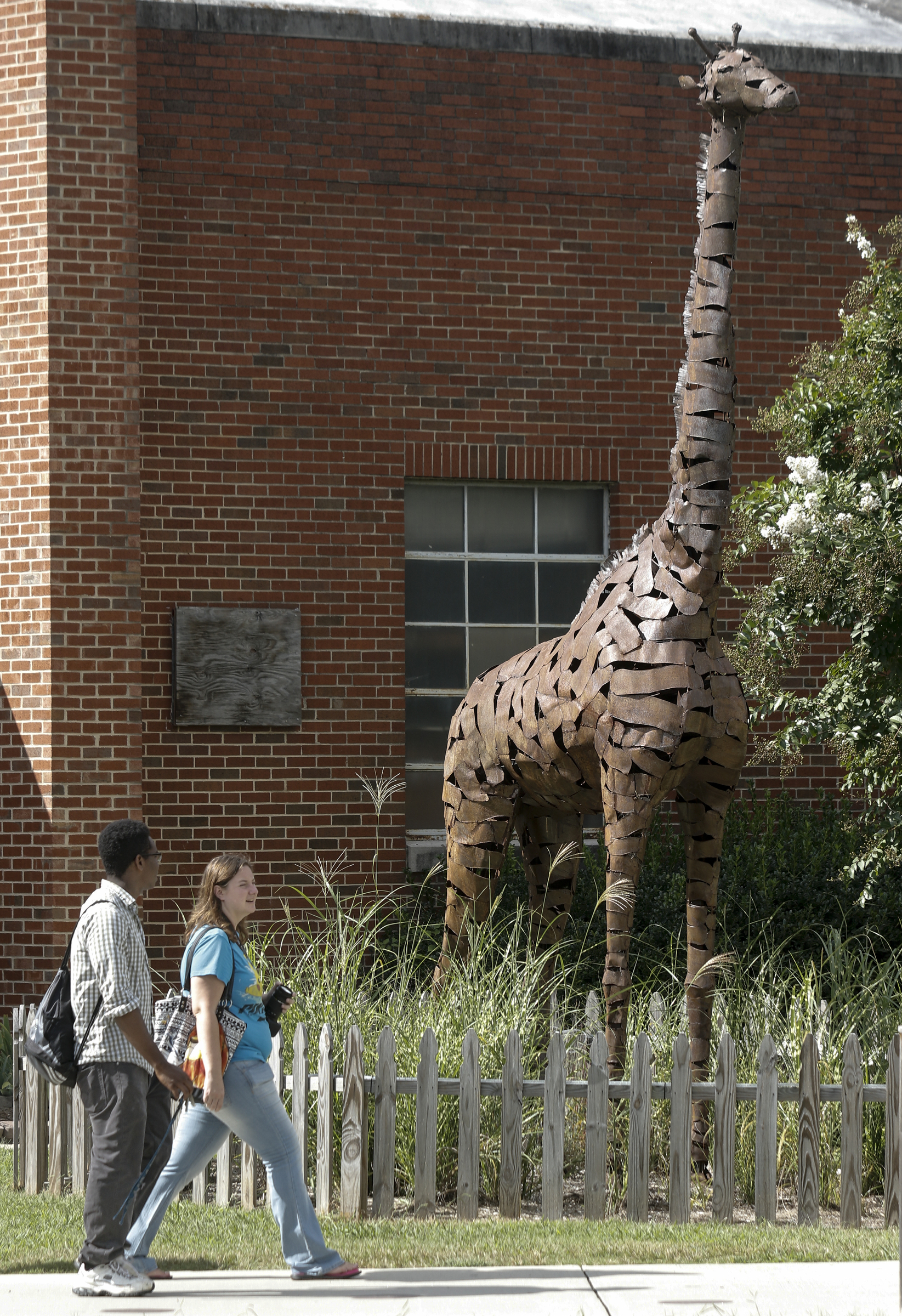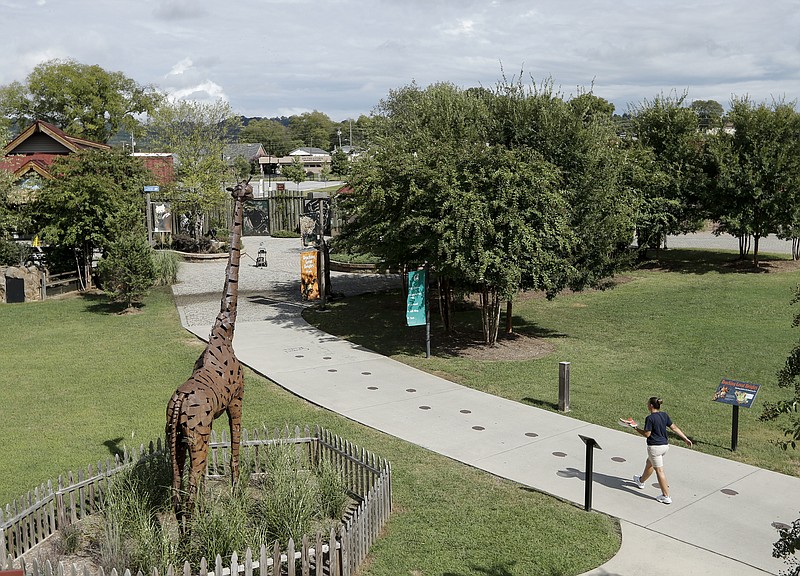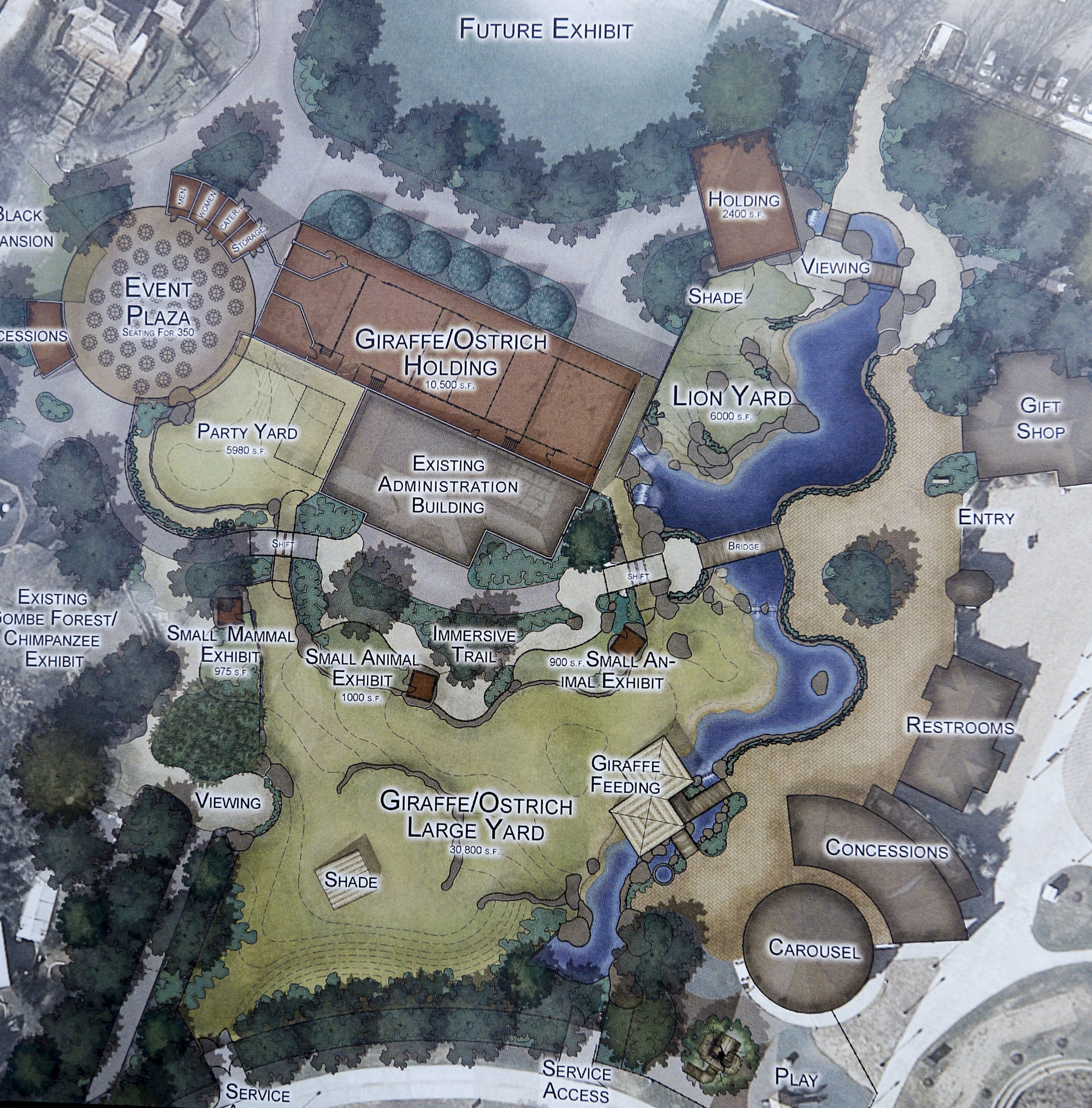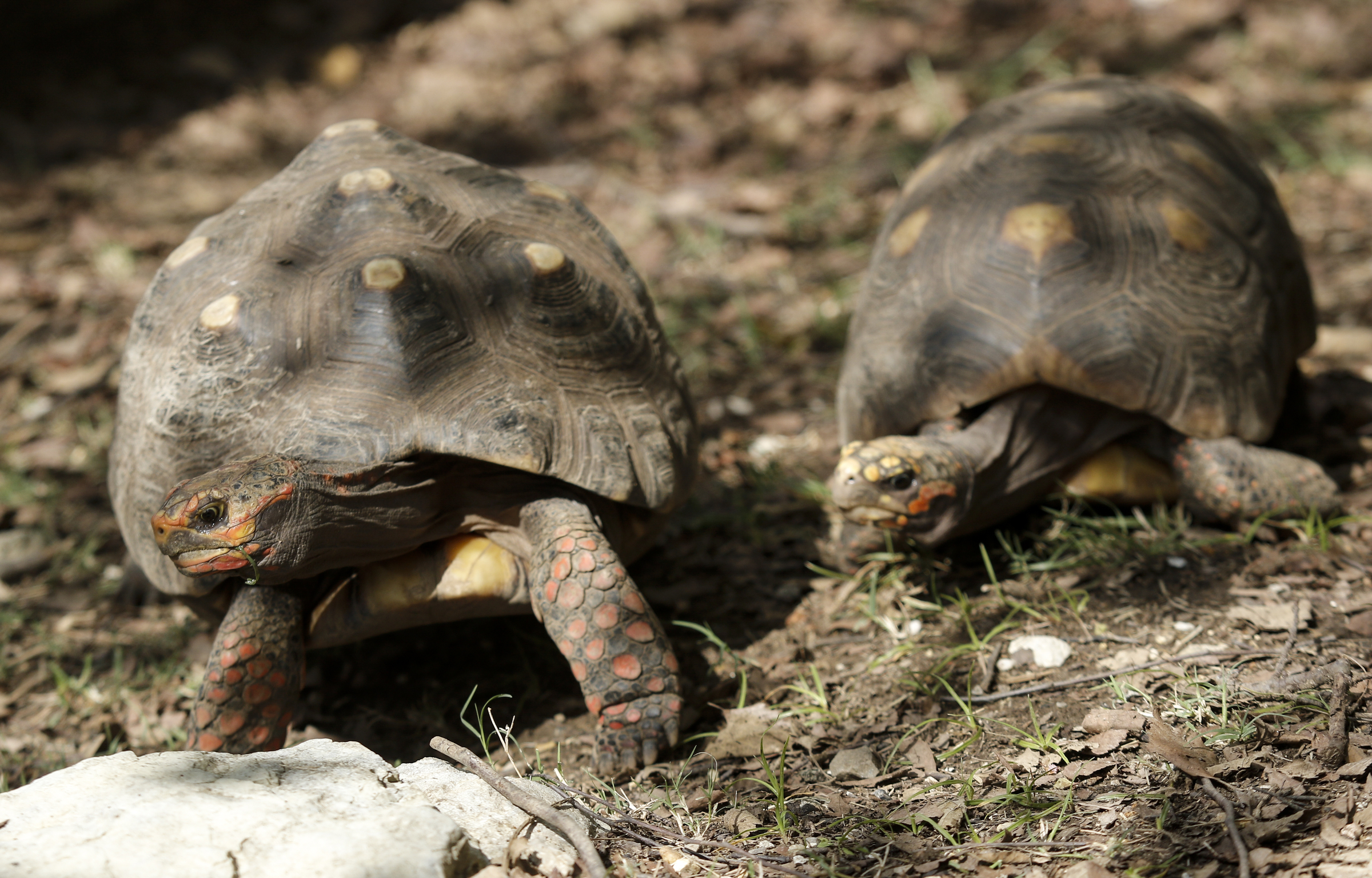Giraffes are everywhere at the Chattanooga Zoo.
A giant statue looms over the walking path, smaller sculptures stand in the administration building and long-necked plush toys are popular purchases in the gift shop. But there are no living, breathing giraffes.
 Adam Blount, left, and Megan Hillyer walk past a statue of a giraffe along a pathway that will be redesigned, with a giraffe enclosure to the right and lion enclosure to the left, at the Chattanooga Zoo on Thursday, Sept. 10, 2015, in Chattanooga, Tenn. The zoo has announced plans for a $10 million project to repurpose areas near the current entrance for a giraffe enclosure, scheduled to be completed in 2018, and a lion enclosure, scheduled for completion in 2020.
Adam Blount, left, and Megan Hillyer walk past a statue of a giraffe along a pathway that will be redesigned, with a giraffe enclosure to the right and lion enclosure to the left, at the Chattanooga Zoo on Thursday, Sept. 10, 2015, in Chattanooga, Tenn. The zoo has announced plans for a $10 million project to repurpose areas near the current entrance for a giraffe enclosure, scheduled to be completed in 2018, and a lion enclosure, scheduled for completion in 2020.Notable zoo additions
1987Hyenas: $10,0001996 Jaguars: $200,0002001Chimpanzees as part of Gombe Forest exhibit: $1.9 million2004Red Pandas as part of the Himalayan Passage phase one: $750,000 for phases one and two combined2005Cougars and viewing train car as part of the Cougar Express exhibits: $160,0002006Snow Leopards as part of the Himalayan Passage phase two: $750,000 for phases one and two combined2008Front entry and plaza: $4.2 million2013Foxes, pancake tortoises, sloths, Komodo dragons, Chinese alligators as part of the Deserts and Forests exhibits: $400,000
Yet.
The zoo is in the midst of raising $10 million for the biggest expansion in its 78-year history. If construction unfolds on schedule, giraffes will roam zoo grounds by 2018 and lions will have a home there by 2020. The expansion will take up nearly half of the zoo's 14 acres, according to blueprints of the two new exhibits.
The $10 million will come from donations large and small, said Hannah Hammon, the facility's director of marketing and communications. People can purchase naming rights for items ranging from $3 million for the giraffe exhibit to $100,000 to name an actual giraffe.
The zoo needs $3 million to break ground and has $1.5 million now, Hammon said. Construction is scheduled to begin next June, with no closures expected during the four-year plan.
"This is the biggest capital campaign expansion that we have ever done," Hammon said, a giraffe sculpture looking down from a shelf above her head.
Darde Long, the zoo's president and CEO, has worked there for 30 years. When she started, the zoo stretched only an acre and a half and was in "horrible condition," she said.
Over the next couple of decades, the zoo became more reputable, and it was accredited by the Association of Zoos and Aquariums in 1998. Attendance rose and, with this latest expansion, zoo officials want to keep it growing.
"We already are proud of our zoo," Long said. "But to take it to this next level is, I think, going to put that final touch of frosting on the cake."
The Chattanooga Zoo doesn't have a storied tradition, as Long admitted. When she got to the zoo 30 years ago, she wasn't trying to transform it into the San Diego Zoo, she was just trying to fix what was there, she said. The rapid change since she got here has even surprised Long.
"I can truly tell you that, even less than 10 years ago, I never thought we'd have giraffes at the zoo," she said. "I just never dreamed that big."
On deciding which animals to add, the zoo brought in David Walsh, a zoo adviser for 15 years who has been advising the Chattanooga Zoo for about half that time. Zoos call advisers like Walsh because they have a particular expertise on the business side, he said.
After five or six months researching area zoos and the Chattanooga market, Walsh recommended bringing in giraffes and lions.
"Giraffes are proven to have success," he said.
The amiable creatures boost attendance and mesh well with other animals in the same exhibit, Walsh said. Adding them is also a smart financial decision. People can have giraffe tongues slurp lettuce out of their hands in paid-for feeding sessions. That way the patrons interact with an animal that usually lives 8,000 miles away, and the zoo makes money.
Being that close to an animal creates a personal connection, Walsh said, which in turn produces a desire for conservation of the animals in their wild habitat.
"The giraffe is the zoo animal," Hammon said.
When the zoo decided on giraffes, it reached out to the Nashville Zoo for advice, like how to build a giraffe barn. The Nashville Zoo moved to its current location in 1996, and its logo featured silhouettes of giraffes. The problem was that for about 10 years the zoo didn't have any giraffes, until Nashville opened the Giraffe Savanna exhibit in 2006, said Jim Bartoo, marketing director of the zoo.
"I couldn't tell you how happy I was," Bartoo said, laughing at the memory of finally getting the animals after years of flack from the public. "Some people were just real unpleasant about it. Some even demanded their money back."
That year, attendance rose 3.5 percent. Whenever a baby giraffe is born in Nashville, the attendance spikes again.
"Giraffes are one of the animals people expect to see when they go to the zoo," Bartoo said.
In original mockups of the plan, the Chattanooga Zoo giraffes were going to be the only main addition. But zoo officials realized they had enough land - 10,167 square feet, to be exact - to house another animal.
The Chattanooga Zoo is one of the smallest AZA zoos in the southeastern United States, so it needs to use the space it does have wisely, officials said. Several additions were considered - hippos, rhinos, hyenas - before deciding on lions. Like the giraffe, the public has the opportunity to name a lion, as long as someone is willing to pay $75,000.
The lion enclosure will have no fences. Only a moat will separate spectators from 400-pound predators - that and a stone wall above the water that will be too steep for the lions to climb. With the addition of these animals, one day the Chattanooga Zoo may house giraffe calves or lion cubs.
"We made sure, with doing these species, we would be able to potentially be a breeding program," Hammon said. "We wouldn't want a species [with which] we weren't able to participate in those programs."
Chattanooga residents will have to wait years to see the finished product, depending on the momentum of the fundraising effort.
Until then, the gift shop has stuffed giraffes on sale for $13.99.
Contact staff writer Evan Hoopfer at ehoopfer@timesfreepress.com, @EvanHoopfer on Twitter or 423-757-6731.


